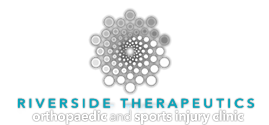Physiotherapy for Neck Pain or Injury
Neck pain can occur anywhere from the bottom of your head to the top of your shoulders and can sometimes spread to your upper back. Excessive stress to your neck can result in you feeling a knot, stiffness or pain in your neck muscles that can lead to difficulty in turning your head.
Neck pain can also be associated with headaches, facial pain, shoulder pain, and arm numbness or tingling. Symptoms can also associated with a compressed or irritated nerves in the neck.
Some common causes of acute neck pain include:
- Carrying a heavy backpack or purse on one shoulder
- Emotional stress (anxiety/depression) can cause neck muscles to tighten up and become painful
- Sports injury due to strain from a sudden or unusual neck movement or collision
- Poor posture when sitting at a screen/book for long periods of time (phone, computer etc)
- Being in an awkward position for a period of time (Sleeping on your stomach, painting etc)
- Trauma from a car accident or a fall
Most episodes of neck pain will go away within a few days or weeks, but pain that persists for months could indicate an underlying medical issue that must be addressed. Early treatment intervention is recommended for the most optimal recovery.
Common causes of neck pain:
Cervical Degenerative Disc Disease – The cervical spine experiences wear and tear as we get older. This is a natural process that sometimes becomes painful and sometimes doesn’t. If a disc degenerates or dries-out enough, it can lead to increased joint and ligament stress and pain or painful irritation of the nerve.
Gradual degeneration of the disc can also lead to a decrease in thickness and buoyancy, compromising space for neural- or circulatory-tissues, potentially contributing to pain and/or “stenosis” (see below).
Herniated Disc – A bulge can develop when the discs’ jelly-like inner layer leaks out through a tear in its protective outer layer (like a bulging balloon filled with water).
This could result from an injury or due to degeneration over time. If large enough, a herniated disc may press against or indirectly irritate a nerve causing pain (down the arm).
Whiplash – Whiplash occurs when the head and neck are suddenly forced backward and forward immediately afterwards (like the cracking of a whip). Most common causes of a whiplash are rear-end car collisions, sport-related collisions or common falls.
The soft tissue along and near the cervical spine can be lengthened, or torn as result from excessive stretch or excessive compression.
Cervical Osteoarthritis – When the cartilage in a cervical facet joint wears down it can lead to osteoarthritis, also known as cervical spondylosis.
The joint becomes enlarged from inflammation, possibly developing bone spur growth. This space occupying process may lead to nerve compression and pain.
Cervical Stenosis – Spinal stenosis occurs when degenerative processes lead to a narrowing of the neural canal, potentially compressing different nerve structures.
Central Stenosis – compression of the spinal cord in the central canal can cause symptoms such as weakness, loss of balance or problems with coordination in the arms, hands, legs, or feet.
Foraminal Stenosis – compression of the nerve root exiting through the lateral canal. This can lead to symptoms such as pain (down your arm), numbness, tingling or weakness.
Myofascial Pain – Achy muscles and surrounding connective tissue can cause irritable trigger points in muscles; typically in the upper back or neck. Trigger point pain may be localized to the muscle or can spread to/from other areas.
Headaches (cervicogenic headaches) – Neck problems can also affect muscles and nerves connected to the head. This can result in a tension headaches or occipital neuralgia (compression of the occipital nerve).
TM-Joint Dysfunctions – The Temporo-Mandibular joint (TMJ) acts like a sliding hinge, connecting your jawbone to your skull. TMJ disorders can cause pain in your jaw or in the muscles that control it. It sometimes refers pain into your ear much like an earache.
In order to ensure necessary stability/strength (biting/chewing) as well as mobility (opening): the TM-joints are supported by an intra-articular disc: when the joint pivots on and off the disc, a clunking can be felt.
Physiotherapy Treatment
Physiotherapy management of the above conditions has been proven to be helpful in relieving pain, speeding up recovery and help managing chronic issues.
Treatment can include education, self-care management, exercise therapy and/or manual or manipulative techniques commonly used by a registered physiotherapist. Other treatments such as acupuncture, soft tissue release and massage therapy can also help.
A registered physiotherapist can conduct a skilled assessment and examination of the spine and recommend the appropriate physiotherapy treatment. For most neck pain issues, X-Ray and other imaging is not required for management in the initial stages.
To book an appointment, call Suzanne at 709-757-3310
Book Online